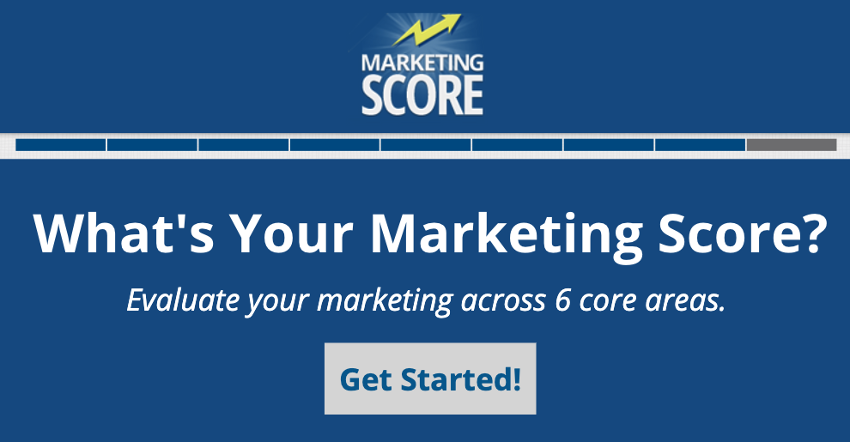Today's consumer is passionate about his or her favorite brands. It's not just a transaction anymore. It's a lifestyle—driven by customer interest and experience.
There has been an evident shift in the early months of 2014. Sixty-two percent of small businesses are assigning a large majority of their marketing budgets to customer retention this year, according to a new report from BIA / Kelsey and Manta. Marketers are finally looking past the traditional funnel (not quite past the obsession with lead gen, however), and sharpening their focus on customer experience and the impact of solid customer loyalty.
 And rightly so.
And rightly so.
Study after study shows that existing customers are a company's most valuable asset. Marketing Metrics found that the likelihood of making a sale with a current customer is 60% to 70%, while selling to a new prospect is only 5% to 20%. MarketingProfs reported that loyal customers spend about 10 times more during their lifetime.
And, according to IBM’s 2013 Global Survey of Marketers, “Retaining existing customers and improving loyalty and satisfaction” is marketers’ biggest challenge—right behind acquiring new customers.
As marketers look for new ways to validate the customer experience and foster loyalty, where do we start?
At PR 20/20, we visualize the sales funnel as an hourglass, turning customer retention and growth from an afterthought into a strategic post-sale objective. Be strategic about the way you nurture current customers, and put as much effort into post-sale activities as you would into lead generation. The odds are it will pay off in the long run (so the studies say). Plus, according to Bain & Company, you’ll pay up to seven times more to bring in a new customer than sell to an existing one.
4 Steps to Create Customer Advocates & Drive Referrals
At last year’s Content Marketing World, Ardath Albee of Marketing Interactions Inc. (@ardath421) discussed customer retention. She pointed to a critical marketing continuum:
- Happy customers become advocates.
- Advocates result in referrals.
- Referrals turn into highly qualified leads.
Below are the four key components of an impactful customer loyalty program. Consider them when working to turn paying customers into advocates with a deep brand bond.
1. Identify customer milestones, and designate corresponding touch points.
Identifying customer milestones is a big piece of getting to know your customer on a deeper level. You might have already mapped out the big moments throughout the buying cycle, but what happens next? Do your customers generally go through similar cycles with your product or services?
One of these milestones (or critical moments to be aware of) is what we call the post-honeymoon stage. The initial infatuation is over, and your customer is likely looking to see tangible return. Pinpoint when this stage usually starts, and prevent negative feelings or feedback with a deliverable showcasing work to date, plus the impact.
Other milestones are easier to target, like annual anniversaries. Have a structured plan in place for yearly partnership milestones to ensure customers are happy with the overall experience company-wide. Treat them to a nice dinner, send a favorite treat or design special offers for long-time customers.
Keep an eye out for more personal highpoints too (specifically with your main point of contact), like promotions, birthdays or life events. Take the opportunity to build a more personal relationship, and send a card or extend an invitation for drinks.
Make customers feel included in internal milestones. Is your business celebrating its 10th year? Send out a specialized coupon code for the day-of, or offer a free item at local stores. Product-based companies should look to track new customer contact information, and send email touch points when possible (i.e. birthdays, year-mark, etc.).
2. Design customer-only content.
If anyone should reap the benefits of internal expertise, there’s no doubt it’s your paying customer. So, find opportunities to add value to your partnership, and emphasize your differentiators. Pay attention to industry-specific news and trends, and look for opportunities to send customers helpful content.
For example, during the Heartbleed crisis, my colleague Taylor Radey (@TaylorLauren) highlighted a few prime crisis communication examples. All companies included provided timely, helpful content to their patrons. Position yourself as proactive confidant and helpful partner; otherwise, competitors are probably more than happy to fill that role.
Aside from reactive content, look to create content or research pieces, and offer exclusivity to paying customers. You’ve probably heard it one to many times, but content is truly ‘king.’ It’s a strategic way to validate customer reliance, and showcase internal talent.
3. Get social with your customers (social engagement).
 Developing truly great customer loyalty means developing a one-on-one relationship past your business exterior. Thanks to the nature of social, social channels are a good place to break the ice.
Developing truly great customer loyalty means developing a one-on-one relationship past your business exterior. Thanks to the nature of social, social channels are a good place to break the ice.
People shape their own brands though social, and hopefully, these are multi-dimensional brands with a mix of the personal and professional. Someone looking to connect with me might be inclined to share book recommendations or fitness articles, per my Twitter bio.
Follow your customer’s company and personal handle on Twitter, and connect with him or her on LinkedIn (if you haven’t already). Take 15 minutes every week to see what your customers are talking about, and if relevant, chime in. (Note: There are helpful monitoring tools to save time here, like HubSpot lists or private lists built in HootSuite or TweetDeck.
Other ways to meet customers on social include:
- Hold a tweet-up (good tool for lead gen, too).
- Post paid updates for customer-specific content (i.e. sponsored LinkedIn updates, promoted tweets, Facebook offers).
- Share articles that they might find interesting.
- Address complaints transparently.
4. Build a referral program.
Back to what Albee was preaching at Cleveland’s Content Marketing World: Happy customers become advocates, and advocates lead to referrals.
But, don’t sit back and wait for referrals to happen.
No referral program is identical; each will vary based on the nature of your business. But the underlying point of any good referral program is to grow your best customers into VIP patrons and brand ambassadors.
To lay the foundation, first determine the criteria for those who make the VIP list. Is it a spending metric? Do they praise your product or service in the social sphere? Or, perhaps you include customers who have remained loyal for 5+ years.
Once you have a set classification, develop VIP-only offerings—and make them worth their while. In fact, make it hard not to recommend your services to family and friends.
If you’re just getting started, I’d suggest looking at some businesses setting the bar for customer loyalty. One well-known example of a worthwhile program is American Airlines AAdvantage. With AAdvantage, frequent flyers are rewarded with free miles. Other benefits include vacation packages, flight upgrades and more. What more could customers ask for in exchange for ongoing loyalty?
Other good models to look into include My Starbucks Rewards, or Target’s Rewards & Benefits. Starbucks gives repeat customers “stars” when they make a transaction. The more stars you earn, the more benefits you get (like free refills or exclusive offers). With Target’s REDcard, customers get 5% off every single purchase, plus free shipping online. (These are large, enterprise example, but might inspire scaled-down ideas for your business.)
What’s the Bottom Line?
There is great opportunity to grow revenue based on your existing customer base. On the flip side, there’s also the chance that existing customers will leave you behind if they can’t validate their spend.
Don’t take the risk. The best way to grow and maintain your bottom line is to move further into the funnel, or maybe, to create a brand new funnel that begins again post-purchase.
What activities does your business or marketing team take on to nurture a loyal customer base? Am I missing anything? I would love your feedback!

%20Logo_BlueOrange_Trademark.png?width=800&height=269&name=Ready%20North%20(RN)%20Logo_BlueOrange_Trademark.png)




.jpg?width=300&name=Services%20Hub%203%20(3).jpg)


COMMENTS